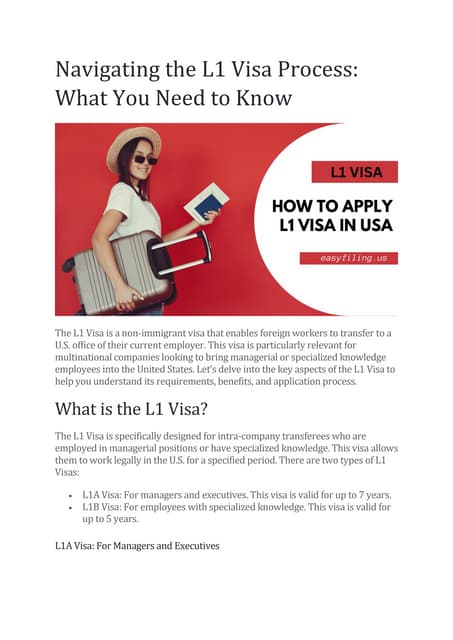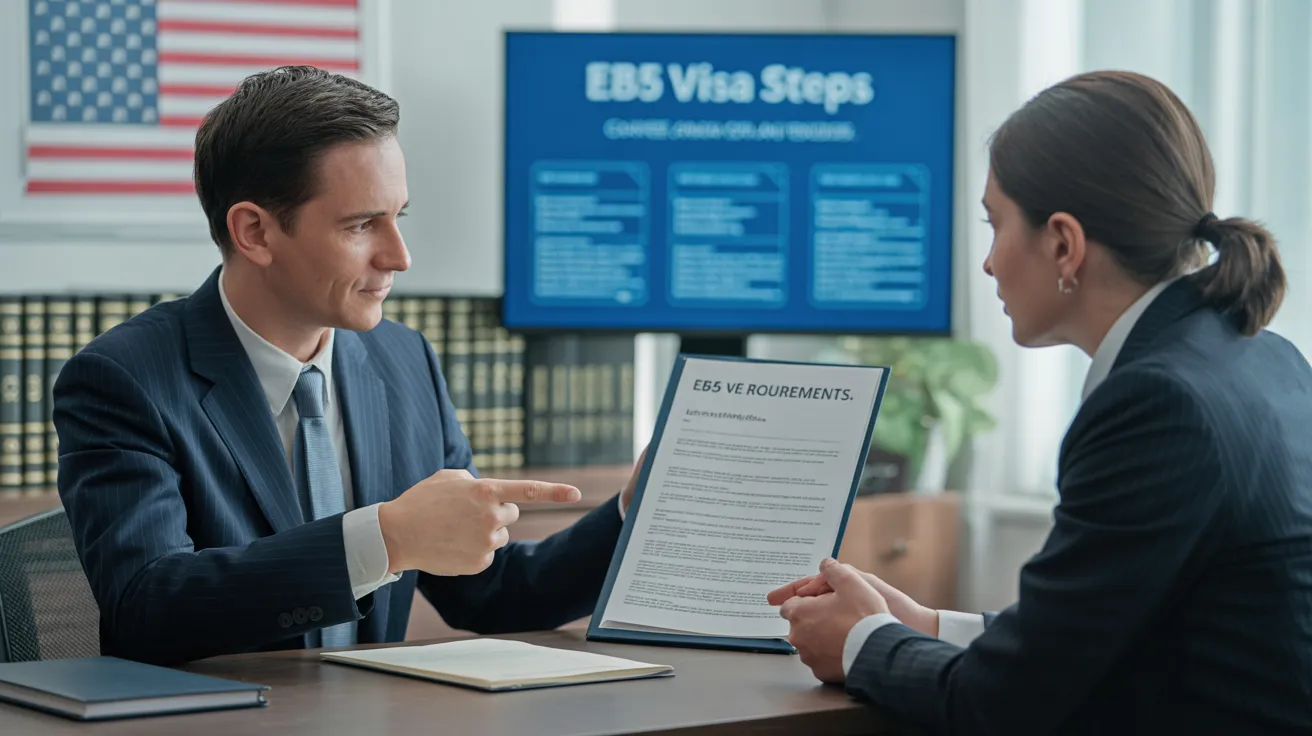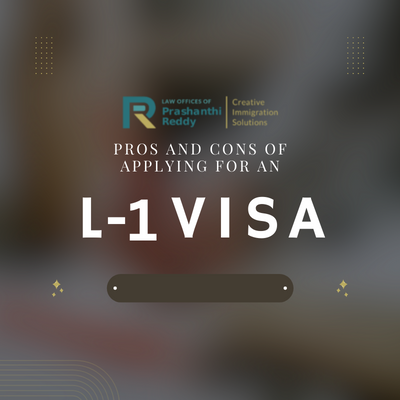L1 Visa Timeline
Wiki Article
4 Simple Techniques For L1 Visa
Table of ContentsIndicators on L1 Visa You Should KnowThe Ultimate Guide To L1 VisaThe Ultimate Guide To L1 VisaWhat Does L1 Visa Mean?9 Easy Facts About L1 Visa ShownL1 Visa Things To Know Before You Buy
Offered from ProQuest Dissertations & Theses International; Social Scientific Research Premium Collection. DHS Workplace of the Examiner General. Recovered 2023-03-26.
United State Division of State. Fetched 2023-02-08. Tamen, Joan Fleischer (August 10, 2013).
L1 Visa Things To Know Before You Buy
In order to be qualified for the L-1 visa, the international firm abroad where the Beneficiary was employed and the U.S. company have to have a qualifying connection at the time of the transfer. The different kinds of certifying connections are: 1.
Example 1: Company A is incorporated in France and utilizes the Recipient. Company B is integrated in the U.S. and intends to seek the Beneficiary. Company An owns 100% of the shares of Business B.Company A is the Parent and Firm B is a subsidiary. For that reason there is a certifying partnership between the two companies and Firm B must be able to sponsor the Beneficiary.
Example 2: Business A is included in the U - L1 Visa.S. and intends to seek the Beneficiary. Firm B is incorporated in Indonesia and employs the Recipient. Business A has 40% of Business B. The staying 60% is had and controlled by Business C, which has no relationship to Company A.Since Firm A and B do not have a parent-subsidiary relationship, Business A can not fund the Beneficiary for L-1.
Company A possesses 40% of Business B. The continuing to be 60% is had by Firm C, which has no relation to Business A. Nonetheless, Company A, by official agreement, controls and complete takes care of Firm B.Since Firm A possesses much less than 50% of Business B however manages and regulates the business, there is a certifying parent-subsidiary relationship and Firm A can fund the Recipient for L-1.
4 Simple Techniques For L1 Visa
Affiliate: An associate is 1 of 2 subsidiaries thar are both possessed and managed by the same parent or person, or possessed and managed by the exact same group of individuals, in basically the very same ratios. a. Instance 1: Firm A is included in Ghana and employs the Beneficiary. Firm B is integrated in the united stateFirm C, additionally included in Ghana, possesses 100% of Business A and 100% of Company B.Therefore, Firm A and Company B are "affiliates" or sister companies and a certifying connection exists between both firms. Firm B ought to be able to fund the Recipient. b. Example 2: Firm A is integrated in the U.S.
Firm A is 60% had by Mrs. Smith, 20% possessed by Mr. Doe, and 20% possessed by Ms. Brown. Firm B is integrated in Colombia and presently employs the Beneficiary. read more Business B is 65% owned by Mrs. Smith, 15% owned by Mr. Doe, and 20% owned by Ms. Brown. Business A and Company B are affiliates and have a qualifying partnership in 2 different means: Mrs.
The L-1 visa is an employment-based visa classification developed by Congress in 1970, permitting international firms to transfer their managers, execs, or crucial personnel to their U.S. operations. It is typically referred to as the intracompany transferee visa. There are 2 main sorts of L-1 visas: L-1A and L-1B. These types are ideal L1 Visa attorney for workers hired in different placements within a firm.

In addition, the recipient has to have operated in a supervisory, executive, or specialized employee placement for one year within the 3 years preceding the L-1A application in the foreign firm. For new office applications, foreign work has to have been in a supervisory or executive capability if the beneficiary is pertaining to the United States to work as a manager or exec.
Some Known Facts About L1 Visa.

If given for a united state firm operational for greater than one year, the initial L-1B visa is for up to 3 years and can be extended for an extra two years (L1 Visa). Conversely, if the united state firm is freshly established or has been functional for much less than one year, the preliminary L-1B visa is issued for one year, with expansions offered in two-year L1 Visa process increments
The L-1 visa is an employment-based visa category developed by Congress in 1970, allowing international business to move their supervisors, executives, or crucial employees to their United state procedures. It is commonly referred to as the intracompany transferee visa.
L1 Visa Fundamentals Explained
In addition, the beneficiary should have worked in a supervisory, executive, or specialized employee placement for one year within the 3 years preceding the L-1A application in the foreign company. For brand-new workplace applications, international employment should have been in a managerial or executive capacity if the recipient is involving the United States to function as a manager or exec.for up to seven years to manage the operations of the U.S. associate as an executive or manager. If issued for a united state company that has been functional for more than one year, the L-1A visa is originally granted for approximately 3 years and can be prolonged in two-year increments.
If provided for a united state company functional for greater than one year, the initial L-1B visa is for up to three years and can be expanded for an extra 2 years. On the other hand, if the U.S. company is freshly developed or has actually been operational for less than one year, the first L-1B visa is issued for one year, with expansions offered in two-year increments.
Report this wiki page